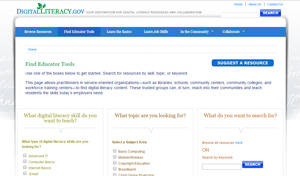
How often have we heard our colleagues use “information overload” to describe the frustration they feel seeking online learning resources? Alvin Toffler coined the term in his book,
Future Shock to describe the challenges associated with the overwhelming amount of information that confronts the public on a daily basis. The avalanche of information continues to grow with increased use of information technologies and threatens our performance by dulling our cognition and impairing the quality of our decision-making. In
Too Much Information: How to Cope with Data Overload, readers are encouraged to use filtering as one method to overcome information overload. Filtering can include the use of technology to narrow down information that arrives in our inbox, but it also requires self-regulation of our own behaviors when it comes to attending to the glut of available information.
How does filtering really work when seeking information? When preparing a lesson on teaching digital literacy skills for a university reading course, an initial Google search on the terms “teaching digital literacy skills resources” turned out more than 3,300,000 potential resources in 0.22 seconds! Clearly, finding reliable information in this pool would be an insurmountable task. The university library system search was more manageable with the same terms producing 85 results. Further filtering on the library system allowed for both targeting of the type of resource (peer-reviewed journal, book, etc.) and the publication date. Use of the filtering system provided a more appropriate set of resources to review for instructional purposes, a total of 20.
The university system was particularly helpful for providing a starting point. Through skimming the article abstracts and references, an online government resource was located for teaching digital literacy skills. DigitalLiteracy.gov is a portal where resources for teaching digital literacy skills are openly available to business leaders, educators, librarians and community members. Educators have a dedicated page which allows readers to further filter resources by topic or the targeted digital literacy skill. Literacy is a listed topic and currently includes 21 resources. Users are able to rate the many lesson plans, activities, videos and curriculum materials available on the site. DigitalLiteracy.gov is a good site for modeling the use of built in filters while providing current information and instructional support related to teaching digital literacy skills.
The greatest challenge of employing filtering can be self-regulation. There is an inherent temptation in all of the interesting titles, images and videos that appear in search results. Surviving (and teaching) in a world of excessive information requires a thoughtful approach to search procedures, careful analysis of information for credibility and timeliness, and relentless monitoring of our own information seeking behaviors. By utilizing filtering strategies educators can cope with information overload!
Joan A. Rhodes is an associate professor and co-chair of the Early/Elementary Education program at Virginia Commonwealth University. She can be reached by e-mail.
This article is part of a series from the International Reading Association’s Technology in Literacy Education Special Interest Group (TILE-SIG).